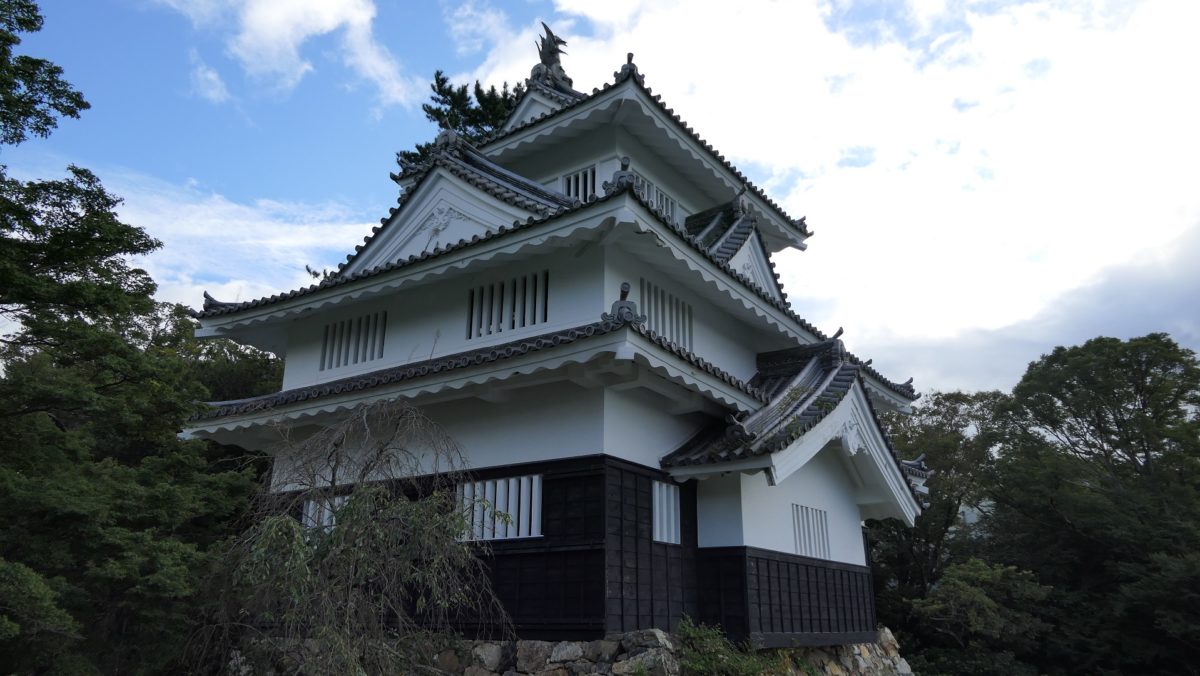立地と歴史~Location and History
戦国大名が城を巡り争う~Warlords battled over the castle
吉田城は、豊川と朝倉川の合流点のすぐ隣に位置しており、現在は愛知県豊橋市に属します。この城はまた、陸上と水上交通の結節点にも当たり、戦略的な位置にありました。そのため、戦国時代には、今川、徳川といった戦国大名がこの城を巡って戦いました。そして、最終的には徳川氏がこの城を制し、所有しました。徳川時代の城の構造は不明ですが、歴史家は、恐らく土造りの城だったであろうと推測しています。
Yoshida Castle is located beside the meeting point of Toyokawa and Asakura-gawa Rivers in what is now Toyohashi City, Aichi Pref. Its location was also strategic for transportation in ground and water, so Warlords such as the Imagawa and Tokugawa clans battled each other over this castle during the Sengoku or Warring States Period. It was finally conquered and owned by Tokugawa for many years. Though the structure of the castle in the Tokugawa’s Era was not clear, historians speculate the foundation of the caste was all made of earth.

池田輝政が城を拡張~Terumasa Ikeda improved the castle
1590年、天下人の豊臣秀吉は、徳川に関東地方に移るよう命じ、池田輝政をこの城の主に据えました。輝政は彼の10年間の統治期間に、城を増強し、櫓や石垣を築きます。その後は、徳川幕府の譜代大名が江戸時代の間、この城を統治し、維持していました。最盛期には、川を背にして本丸、二の丸、三の丸といった曲輪が外側に向かって配置され、空堀によって隔てられていました。更には、外郭として土塁が周りを囲んでおり、その外周は約4kmありました。
In 1590, the ruler Hideyoshi Toyotomi ordered Tokugawa to move to the Kanto Region, and placed Terumasa Ikeda as the lord of the castle. Terumasa improved the castle, building turrets and stone walls over a period of ten years. After that, hereditary feudal lords under the Tokugawa Shogunate governed and maintained the castle in the Edo Period. At its peak, with the back of the rivers, it had the Honmaru, Ninomaru, Sannnomaru enclosures towards the outside, divided by deep moats. It also had earthen walls as the outline whose perimeter was about 4 km.
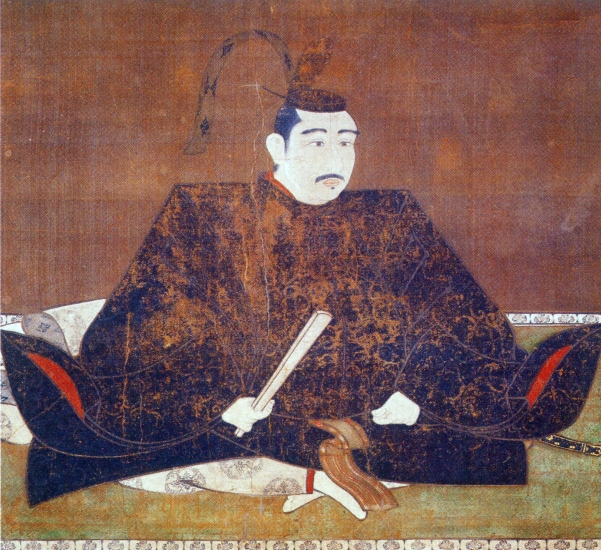
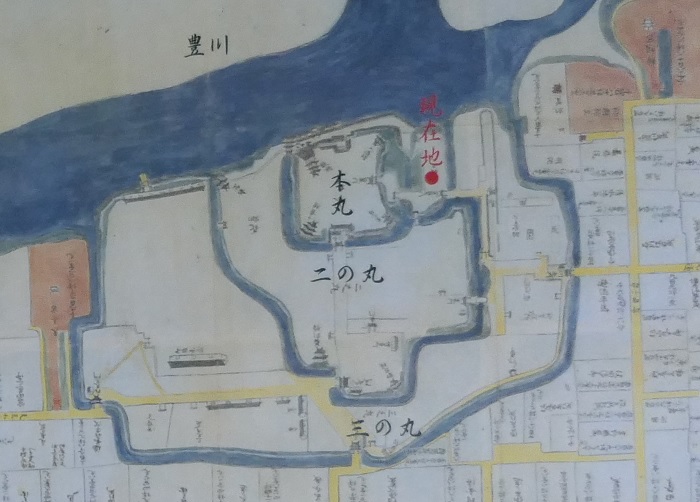
特徴~Features
未完成の城?~Incomplete castle?
吉田城は時折、未完成の城と言われます。その理由の一つはこの城には天守がないこと、そして部分的にしか石垣に覆われていないこと、これらが東海地方の他の主要な城である名古屋、岡崎、浜松、掛川、駿府と比べられているのでしょう。もう一つの理由が池田輝政にあります。彼は、吉田を出てから世界遺産である姫路城を完成させます。彼が吉田にもっと居てくれたなら、吉田城を姫路城のような城にしてくれたのではないかというものです。
Yoshida Castle is sometimes called an incomplete castle, and one reason is because it had no Main Tower or Tenshu, and was just partly covered with stone walls, compared to other major castles in Tokai Region like Nagoya, Okazaki, Hamamatsu, Kakegawa, and Sunpu. Another reason is due to Terumasa. He completed Himeji Castle, a World Heritage Site, after he moved from Yoshida. Some people guess he might have completed Yoshida Castle like Himeji if he had spent more time in Yoshida.
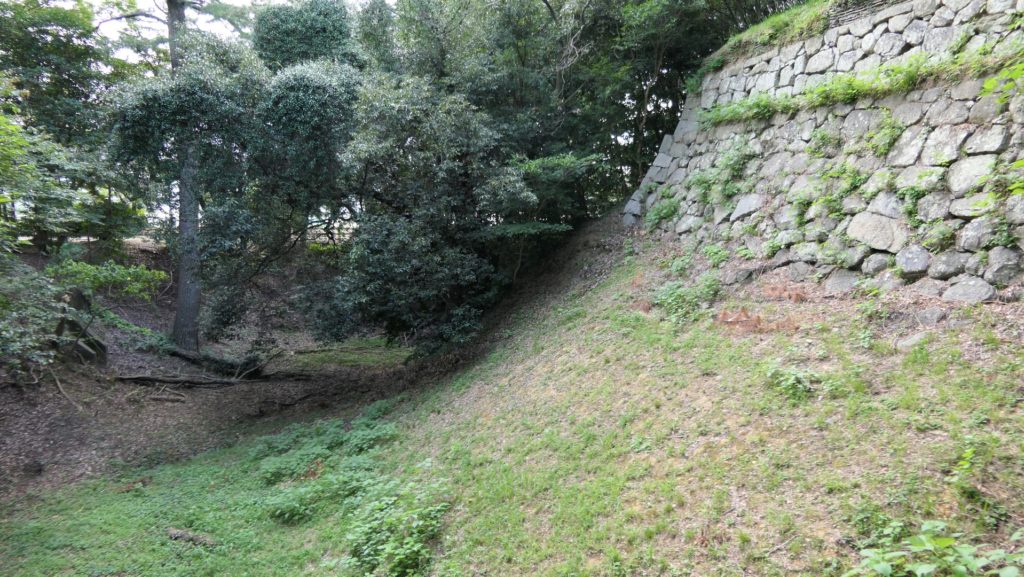

鉄櫓が天守か?~Was Kurogane Turret the Main Tower?
歴史家の内には、記録がないだけで吉田城には天守はあったはずだという人もいます。他には、鉄櫓と呼ばれるこの城の三階櫓が天守だったのだという人もいます。この櫓は、他の城のいくつかの天守より大きいサイズだったこと、(鉄櫓にあった)鉄が使われる門は通常は天守のためのものだったことが根拠です。石垣の件に関しては、郷土史家によれば、もともとこの城は土でできており、そのため、輝政は必要と思う場所にのみ石垣を築いたのだとのことです。石垣を築くには不適当な箇所がたくさんあり、事実輝政の後の大名たちは、洪水や地震の後に、大変な労力でもって石垣を修復していました。
Some historians argue that the castle must have had a Tenshu despite no records remaining. Others say that a three-story turret in the castle, called “Kurogane” Turret, was the Tenshu, as the turret was larger than other Tenshu in some castles and the gate using iron (called Kurogane) was usually used for Tenshu. In the matter of stone walls, local historians explain that the castle had basically been made of earth. Because of it, Terumasa built his stone walls on where he needed them. There were many places which were not suitable for building stone walls. Actually, the lords of the castle following Terumasa all put great efforts to repair the stone walls after floods and earthquakes

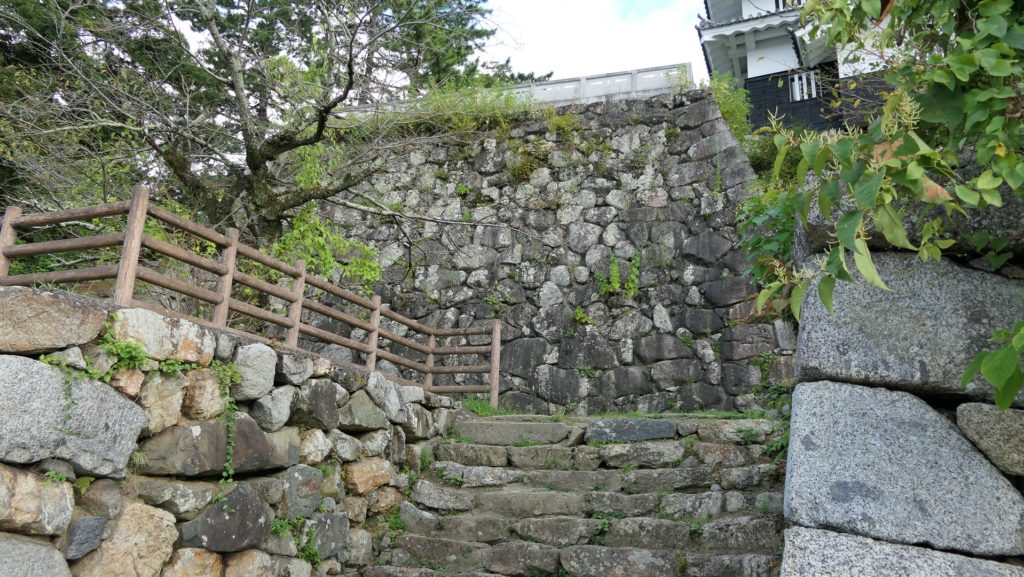
城跡は豊橋公園に~Ruins become Toyohashi Park
城周辺の航空写真~The aerial photo of around the castle現在城跡は、大部分が三の丸の内側になりますが、豊橋公園として使われています。史跡として楽しめるのは、主に本丸と川沿いのエリアです。輝政が築いたオリジナルの石垣の上に、1954年に鉄櫓が復興再建されました。もともとの鉄櫓は、現在のものよりも大きかったと言われています。
Now, the ruins of the castle, almost the inside of Sannnomaru, are used as Toyohashi Park. You can mainly enjoy the Honmaru area and the riverside as historical spots. There is the reconstructed Kurogane Turret built in 1954 on the original stone walls base by Terumasa. The original turret was said to be larger than the current one.

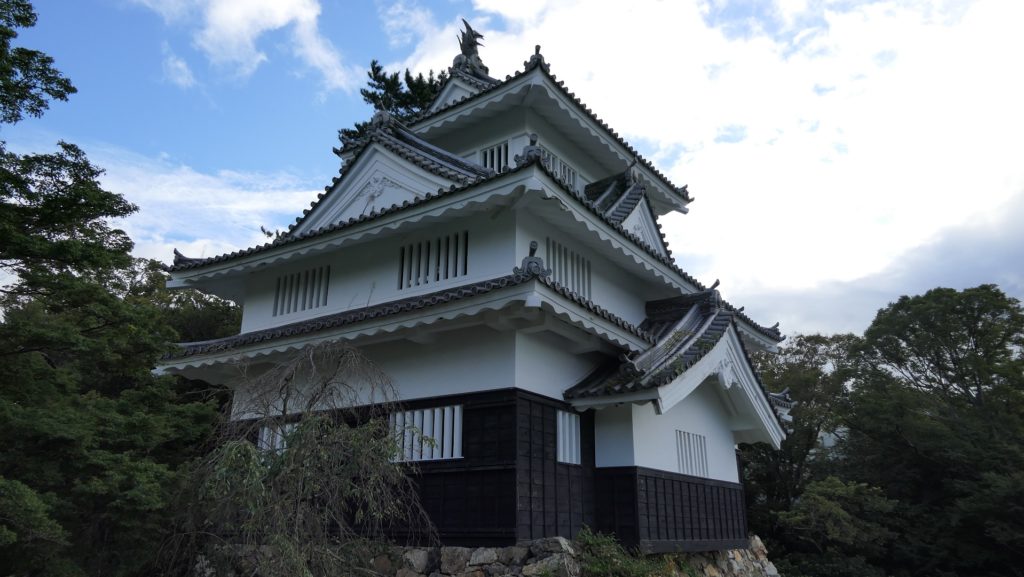
本丸の内側にある他の石垣は、輝政の後に、将軍を迎えるための御殿を作ったときに築かれました。また、川沿いにもたくさんの石垣を見ることができますが、これらは更に後の時代になって置き換えられたものです。この辺りには水門跡もあります。他の公園の敷地は、文化芸術施設のために使われています。そこでも、土塁、石垣、空堀の類を見ることができるかもしれません。
Other stone walls inside Honmaru were built when the main hall for Shogun was built after Terumasa. You can also see lots of stone walls along the riverside which were replaced much later. There are also the ruins of the water gate there. The rest of the park is used for cultural and athletic facilities. You may even find the ruin such as earthen walls, stone walls, and dry moats there.
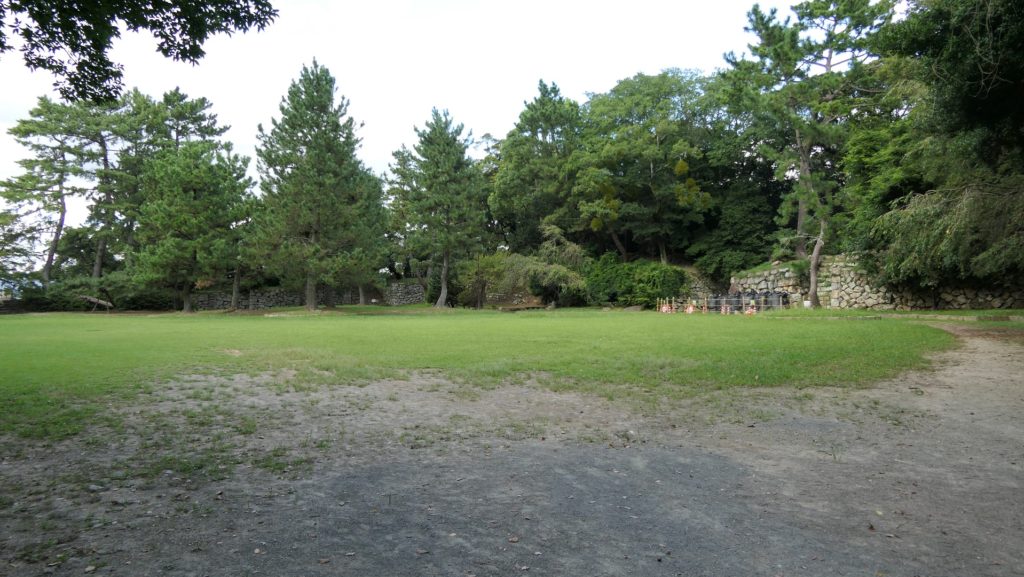


その後~Later History
明治維新後、吉田城は廃城となり、城の全ての建物は撤去されました。そして、第二次世界大戦まで日本軍によって使われていました。
After the Meiji Restoration, Yoshida Castle was abolished and all of the buildings were demolished. The ruins were used by the Japanese Army until World War II.
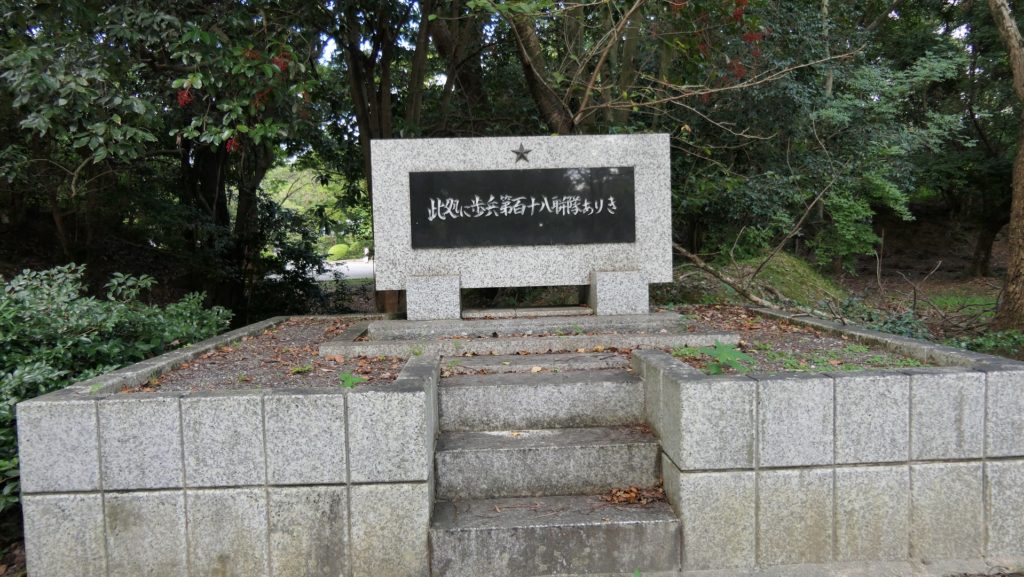
私の感想~My Impression
私は、全ての城は未完成だと思うのです。全ての城はかつては戦い、統治そして権威付けのために使われてきて、芸術のためではありません。そして状況が変われば、それに応じて改造されてきたのです。現在でさえ、城や城跡は常に変わり続けており、それが魅力なのです。ついでながら、もし輝政がもう何年か吉田に留まっていたとしても、吉田城は姫路城とは異なっていたでしょう。立地や状況が違っていたからです。
I think all the castles were never completed. They all had been used for battles, governance and authority, not for art. They had to be modified to deal with a different situations. Even now, castles and ruins are always changing, and that is what is attracting us. In addition, even if Terumasa stayed in Yoshida for more years, Yoshida Castle would have been different from Himeji. It would have depended on its location and situation.
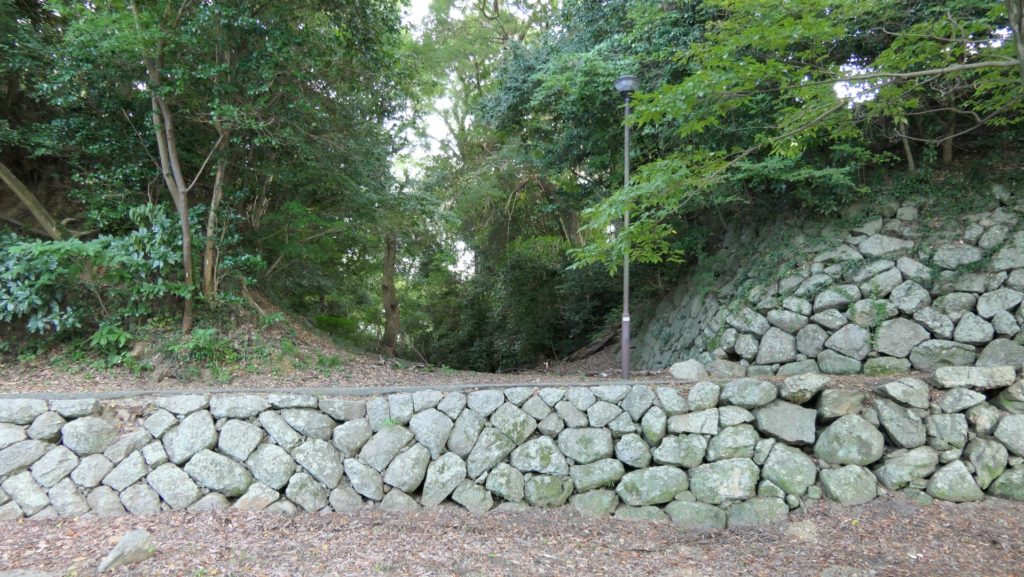
ここに行くには~How to get There
車の場合:東名自動車道の豊橋ICから約20分かかります。公園の中に駐車場があります。
電車の場合は、豊橋駅前にある駅前停留所から市電の赤岩口、運動公園前または競輪場前行きに乗り、市役所前か豊橋公園前停留所で降りてください。
東京または大阪から豊橋駅まで:新幹線に乗ってください。
If you want to go there by car: It takes about 20 minutes from the Toyohashi IC on Tomei Expressway. There is a parking lot in the park.
When using train, take the tram for Akaiwaguchi, Undokoen-mae or Keirinjo-mae at the Eki-mae stop in front of Toyohashi Station, and take off the Shiyakusho-mae or Toyohashikoen-mae stop.
From Tokyo or Osaka to Toyohashi Station: Take the Shinkansen super express.
リンク、参考情報~Links and References
・吉田城(豊橋公園)、愛知県公式観光サイト~Yoshida Castle – Kurogane Yagura Tower – Toyohashi Park
・「三河吉田城/岩原剛編」戒光祥出版(Japanese Book)
・「よみがえる日本の城3」学研(Japanese Book)

